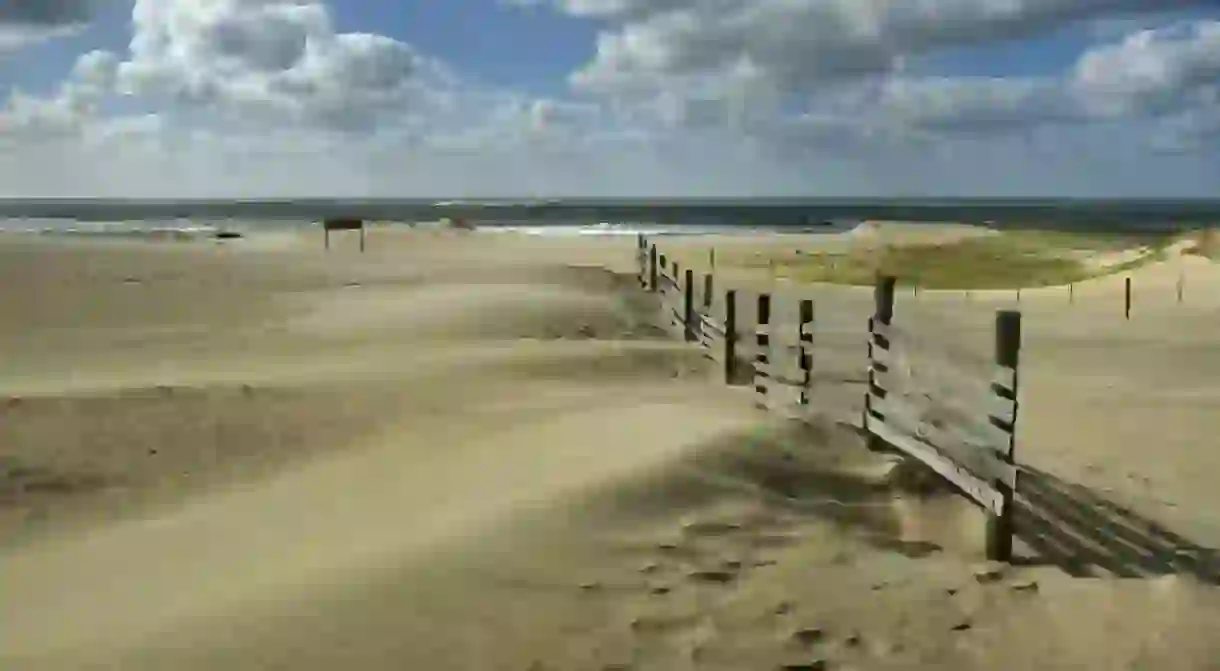The Top 10 Things to See and Do in Punta del Diablo, Uruguay

The name Punta del Diablo means Tip of the Devil, as the rocky headland at the main beach extends out into the ocean, providing a vague resemblance to the Devil’s trident. Another possible explanation for the less-than-welcoming name, is that the first people to arrive here wanted to prevent the dusty beach town from becoming overgrown. Thanks to building code, however, the beach vibe and look of this small hippy town will remain. It’s cropping up as one of the most-visited coastal towns in Uruguay and we’ve rounded up the best things to see and do while you’re there.
Paseo de los Artesanos
There is no real center to Punta del Diablo, as it is all quite spread out, but hidden behind the main junction in town is the little promenade that runs down through a number of restaurants towards the ocean, and opens up to a number of artisan shops and stands the lead you along the dirt road beside the water’s edge.
Feria de Artesanos, Punta del Diablo, Uruguay, +598 4477 2045
Playa de los Pescadores
As you peruse along the shops, looking at souvenirs, empanadas, and sandwich board menus outside restaurants enticing you to take a break in your stroll, you will see boats sitting slanted on the sand. This is Beach of the Fishermen and, as you might expect, the boats are resting after already putting in a full day’s work in the early hours of the morning. As you can imagine, this is the best place in town to get some fresh fish and seafood to cook up for dinner.

Playa de la Viuda
As you come down the principal avenue in town, it bends right towards the center. If you fight that urge and go right, you will be treated to a beach much less visited. Viuda means “widow” is Spanish, as there can sometimes be a strong tow if you go swimming. When the tide is out, however, the sand makes a perfect place to play sports, jog and lay down, and the small sand dunes provide shelter from the offshore wind.
Fortaleza de Santa Teresa
Sipping cocktails at a beach bar is extremely relaxing, but if you want to squeeze in a little culture between mojitos, then take the bus from the central stop to the Santa Teresa Fortress. Open from Thursday to Sunday, this high-walled fortress stands alone in the grass up the hill, just 20 minutes outside of Punta del Diablo, and provides great insight into the Medieval Age of Uruguay.

Santa Teresa National Park
If your days in Punta del Diablo happen to be when the fortress is closed, you can still get a good view of it from the outside, and the entrance to the huge Santa Teresa National Park, where it is located, is free and stunning. Paths that accommodate trekkers and vehicles run through the open park and lead you through the gorgeous forest to a number of beaches scattered on the coastal side of the park, like Playa de las Mozas or Playa de las Achiras, where there is a small town and area to camp.
Cabo Polonio
Between Punta del Diablo and La Paloma, two sleepy surf towns, is the even more basic town of Cabo Polonio, which has no paved roads and is located within the national park of the same name. A few sand paths through the scattered buildings and bumps of grass and sand all lead down to the ocean, where you will find a number of bars and restaurants to relax at, in a town that still feels like an ancient settlement with a splash of color.

Shopping in Chuy
Much of Uruguay feels organized, quiet and European, but once you head to the border town of Chuy you see the influence of Brazil, as walking from one side of the street to the other actually takes you between the two countries. Here is a terrific place to buy all the things that months on the road have stripped you of—like phone chargers that work, shoes without holes, acceptable clothing—all at cheap prices.
Playa Grande
A short walk north from Playa Pescadores, you will find a small pocket of beach called Playa del Rivero. Its proximity to Punta del Diablo makes it very accessible and sometimes busy, so continue on a little further and you will find the adequately named Playa Grande, which stretches for miles and is much more open and free of people.

Horseback riding
Can’t decide on which beach to visit? Then let a horse decide. Go on a horseback riding tour, and hop on the back of your trusty steed. Trot along the water’s edge on hard-packed sand in the afternoon while the sun goes down for a bucket-list-worthy sunset experience.
Sand boarding
The sand dunes along the coast of Uruguay are far more than just a beautiful photo—you can actually rent or buy a board from one of the local surf shops and use the billions of minuscule rock granules as your wave, and coast down the dune. Just on the edge of Cabo Polonio is the dune known as Buena Vista (Good View), which is a perfect sand slope to spend a day hiking up and sliding down into the small, salt-water pool below.













